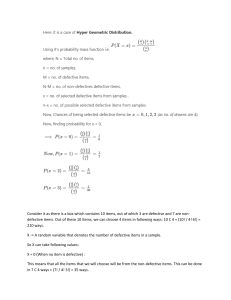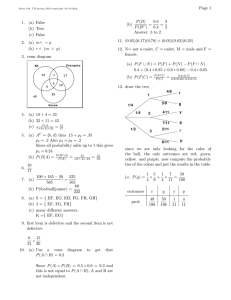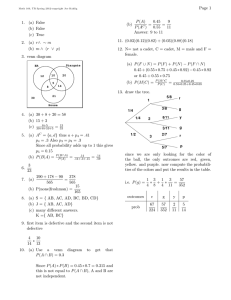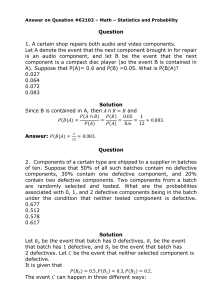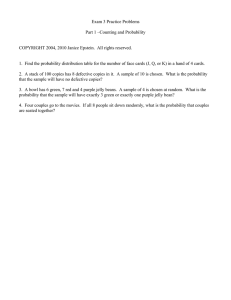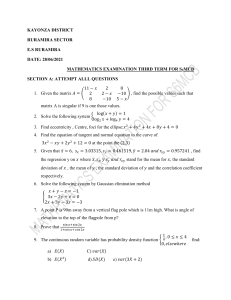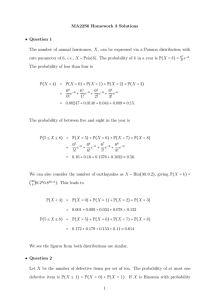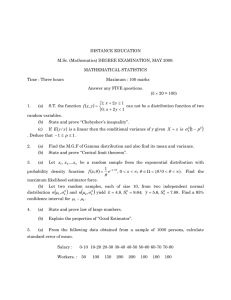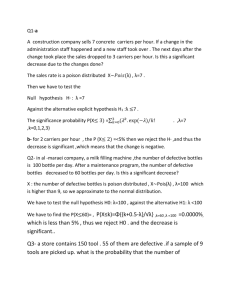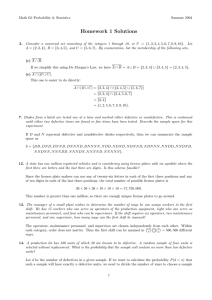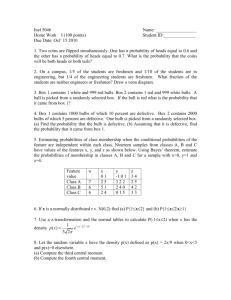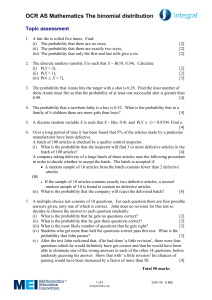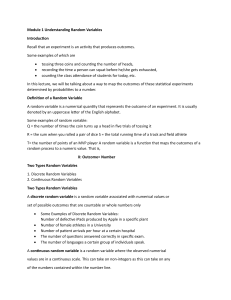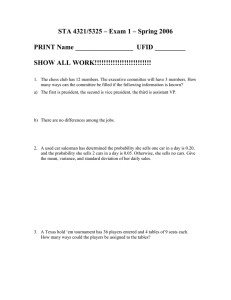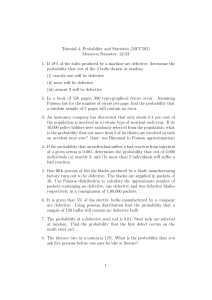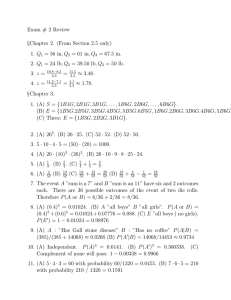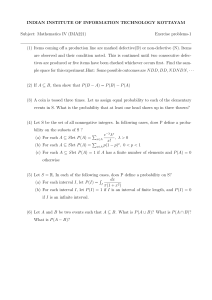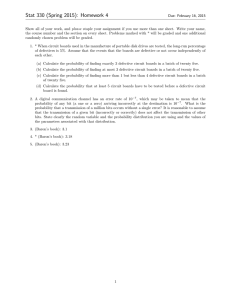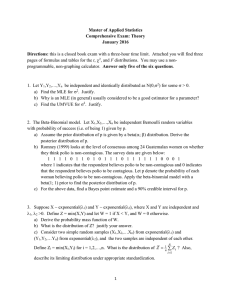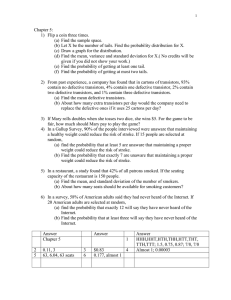Lesson 4. Conditional Probability Review, cont.
advertisement
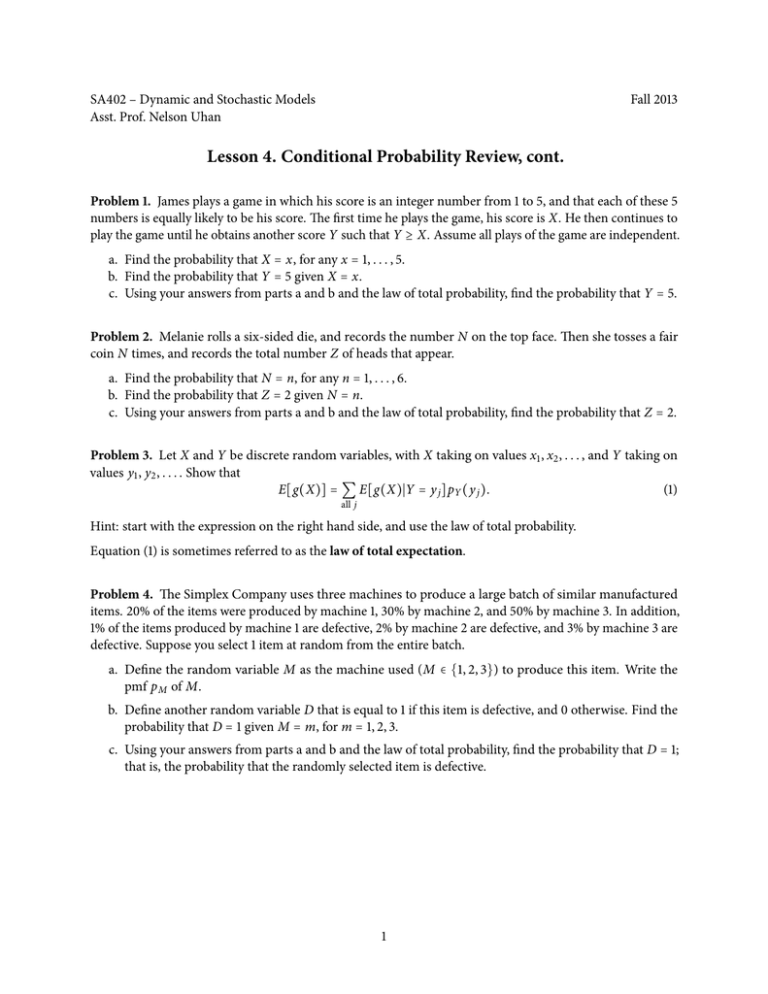
SA402 – Dynamic and Stochastic Models
Asst. Prof. Nelson Uhan
Fall 2013
Lesson 4. Conditional Probability Review, cont.
Problem 1. James plays a game in which his score is an integer number from 1 to 5, and that each of these 5
numbers is equally likely to be his score. The first time he plays the game, his score is X. He then continues to
play the game until he obtains another score Y such that Y ≥ X. Assume all plays of the game are independent.
a. Find the probability that X = x, for any x = 1, . . . , 5.
b. Find the probability that Y = 5 given X = x.
c. Using your answers from parts a and b and the law of total probability, find the probability that Y = 5.
Problem 2. Melanie rolls a six-sided die, and records the number N on the top face. Then she tosses a fair
coin N times, and records the total number Z of heads that appear.
a. Find the probability that N = n, for any n = 1, . . . , 6.
b. Find the probability that Z = 2 given N = n.
c. Using your answers from parts a and b and the law of total probability, find the probability that Z = 2.
Problem 3. Let X and Y be discrete random variables, with X taking on values x1 , x2 , . . . , and Y taking on
values y1 , y2 , . . . . Show that
E[g(X)] = ∑ E[g(X)∣Y = y j ]pY (y j ).
(1)
all j
Hint: start with the expression on the right hand side, and use the law of total probability.
Equation (1) is sometimes referred to as the law of total expectation.
Problem 4. The Simplex Company uses three machines to produce a large batch of similar manufactured
items. 20% of the items were produced by machine 1, 30% by machine 2, and 50% by machine 3. In addition,
1% of the items produced by machine 1 are defective, 2% by machine 2 are defective, and 3% by machine 3 are
defective. Suppose you select 1 item at random from the entire batch.
a. Define the random variable M as the machine used (M ∈ {1, 2, 3}) to produce this item. Write the
pmf p M of M.
b. Define another random variable D that is equal to 1 if this item is defective, and 0 otherwise. Find the
probability that D = 1 given M = m, for m = 1, 2, 3.
c. Using your answers from parts a and b and the law of total probability, find the probability that D = 1;
that is, the probability that the randomly selected item is defective.
1

